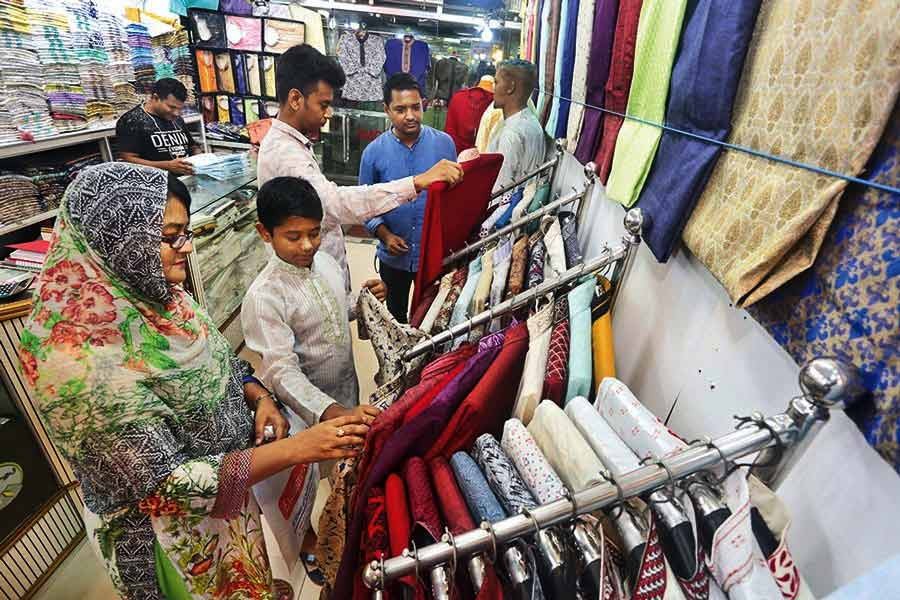The main source of religious festivals traces to observance of rituals. Many of the rituals were related to agriculture and were determined by lunar months. Although most of the festivals were related to religions, they did not evolve on account of religions, but grew spontaneously in the society. Later on, they assumed more formal character. As for example, not very long ago, music was a part of the Eid festival of the Muslims of Bengal, which was an expression of spontaneity. But now it is not there. This goes to explain that the pattern of celebration of Eid changes with the passage of time. Similarly, celebration of Eid varies from country to country.
Eid-ul Fitr is a Muslim festival that follows the Islamic calendar and marks the end of Ramadan - the Islamic holy month of fasting. The first day of Eid-ul Fitr falls on the first day of the month of Shawwal. Shawwal, the tenth month of the Islamic calendar, is a month of celebration and festivities for Muslims in south Asia, particularly in Indonesia and Malaysia. The social meaning of Eid is joyful festival, while its etymological meaning denotes returning time and again, returning to normal life style after fasting for one month. Like all other social festivals, Eid returns every year. Eid-ul Fitr is also a festival of distributing fitra, a form of charity from the rich to the poor, helping them to celebrate Eid. Eid-ul Fitr goes by various names around the world, including: Idul Fitri, Hari Lebaran (Indonesia); Hari Raya Puasa, Hari Lebaran, Aidilfitri (Malaysia, Singapore, Brunei); Wakas ng Ramadan, Hari Raya Puasa (Philippines); Nonbu Perunaal (Tamil) Riyoyo, Riyayan, Rozar Eid (Bengali), Ngaidul Fitri (Javanese); Boboran Siyam (Sundanese); Uroë Raya Puasa (Acehnese); Rojar Eid (Bangladesh); Ramazan Bayram?, ?eker Bayram?, Küçük Bayram (Turkish); Orozo Mayram (Kyrgyz); Rozi Heyt (Uyghur); Eid Nimaz (Sindhi); Korite (Senegal); Id (Uganda); Sallah (Hausa); Kochnay hi supAkhtar (Pashto); Eid-e Sa'eed-e Fitr (The Mirthful Festival of Fitr, Persian); Choti Eid (Urdu); Meethi Eid (Urdu); Cheriya Perunnal (Malayalam); Ramazanski bajram (Bosnian); Bajram (Albanian); Cejna Remezanê (Kurdish); Ramazanski bajram (Croatian);Ciid Yare (Somali); Id al-Fater (Ethiopia).
In Bangladesh Eid is observed colourfully in a befitting manner and with great zeal and zest. The night before Eid is called Chand Rat, which means, Night of the Moon. Muslims visit bazaars and shopping malls with their families for their last minute Eid shopping. Women, especially younger girls, often apply mehendi on their hands and feet and wear colourful bangles. The traditional Eid greeting is Eid Mubarak, and it is followed by a formal embrace. Gifts are given - new clothes are part of the tradition, and it is also common for children to be given small sums of money (Eidi) by their elders. It is common for children to offer salam to parents and adult relatives. After the Eid prayers, it is common for some families to visit graveyards and pray for the salvation of departed family members. It is also common to visit neighbours, family members, especially senior relatives and to get together to share sweets, snacks and special meals including some special dishes that are prepared specifically on Eid.
Eid-ul Fitr has a tremendous impact on the country's economic arena. Markets for clothes, footwear, cosmetics, jewelry and electronic gadgets experience bumper sales ahead of the Eid. Commercial banks witness heavy rush as a large number of clients withdraw and deposit cash in the banks a few days ahead of Eid-ul Fitr. Commercial banks even borrow money from the call money market to tackle the rush. Banks and non-bank financial institutions sometime make record transactions on call money market. Bangladesh Bank also pumps in huge amount of money into the banking system.
The high spending and monetary transactions have a multiplier effect on the economy often going as far as to trigger vibrancy in the stock market. The transport sector, because of the movement of people across the country, experiences a boom. Remittance from abroad also spours in with a positive nudge for the economy.
The joy and pomp with which Eid was celebrated in this land during the Mughal period was confined to the well-off sections of the society. The general body of the masses remained aloof from it. However, the ruins of Shahi Eidgahs in different parts of Bangladesh bear testimony to the fact that the Mughals accorded importance to Eid.
Eid was not celebrated with the same importance in colonial days as it is being done now. The reason was the absence of government patronage, poverty of the people and their ignorance about religion. An account of the Eid celebration by the Muslims of Bengal during the last hundred years reveals that the main feature of the Eid festival was preparation of special food and drink. The food would include korma, polao, and various types of homemade pitha, semai and jarda. In the Eid menu, homemade sweet items would get prominence. One of the main characteristic features of the nineteenth century Eid in Dhaka was the Eid procession. Probably the Naib-Nazims of Dhaka introduced this practice of procession after taking the cue from the famous Janmastami procession of Dhaka . After being stopped for some time, such processions have again been started a few years ago.
In many cases, local or urban culture has also made an impact on this festival. During the 1930s and 1940s, on the Eid day in Dhaka, Khatak dance was performed in Ramna, Armanitola and other grounds. Besides, boat race, kite flying, horse race etc were held. At the start of the last century, when the political movement for a separate Muslim identity began, Eid festival assumed new importance.
Dr Muhammad Abdul Mazid is former Secretary to GoB and Chairman, NBR. mazid.


